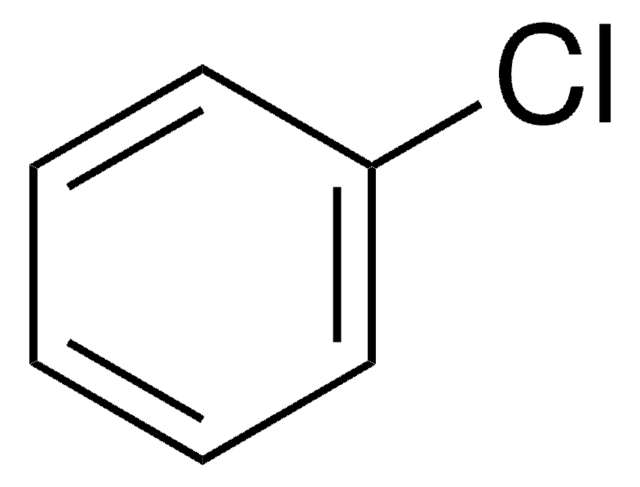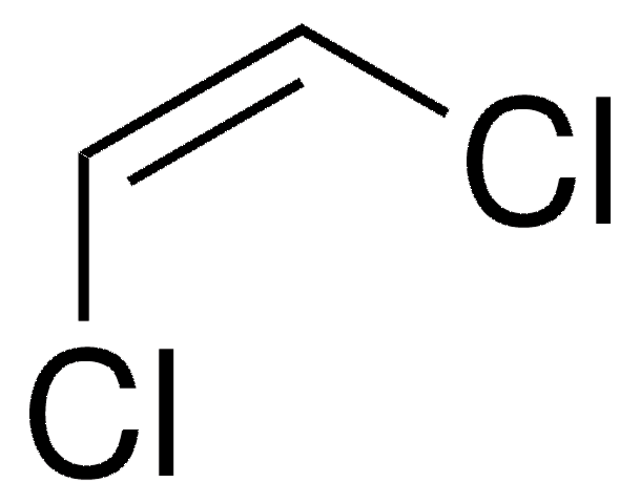372145
Trichloroethylene
anhydrous, contains 40 ppm diisopropylamine as stabilizer, ≥99%
Sinonimo/i:
TCE, Trichloroethene
About This Item
Prodotti consigliati
Grado
anhydrous
Livello qualitativo
Densità del vapore
4.5 (vs air)
Tensione di vapore
61 mmHg ( 20 °C)
Saggio
≥99%
Stato
liquid
Temp. autoaccensione
770 °F
contiene
40 ppm diisopropylamine as stabilizer
Impurezze
<0.002% water
<0.005% water (100 mL pkg)
Residuo dopo evaporazione
<0.0005%
Indice di rifrazione
n20/D 1.476 (lit.)
P. ebollizione
86.7 °C (lit.)
Punto di fusione
−84.8 °C (lit.)
Densità
1.463 g/mL at 25 °C (lit.)
Stringa SMILE
Cl\C=C(\Cl)Cl
InChI
1S/C2HCl3/c3-1-2(4)5/h1H
XSTXAVWGXDQKEL-UHFFFAOYSA-N
Cerchi prodotti simili? Visita Guida al confronto tra prodotti
Descrizione generale
Many methods have been proposed for the mineralization of TCE.
Avvertenze
Danger
Indicazioni di pericolo
Consigli di prudenza
Classi di pericolo
Aquatic Chronic 3 - Carc. 1B - Eye Irrit. 2 - Muta. 2 - Skin Irrit. 2 - Skin Sens. 1 - STOT SE 3
Organi bersaglio
Central nervous system
Codice della classe di stoccaggio
6.1D - Non-combustible acute toxic Cat.3 / toxic hazardous materials or hazardous materials causing chronic effects
Classe di pericolosità dell'acqua (WGK)
WGK 3
Punto d’infiammabilità (°F)
closed cup - does not flash
Punto d’infiammabilità (°C)
closed cup - does not flash
Dispositivi di protezione individuale
Eyeshields, Gloves, type ABEK (EN14387) respirator filter
Scegli una delle versioni più recenti:
Possiedi già questo prodotto?
I documenti relativi ai prodotti acquistati recentemente sono disponibili nell’Archivio dei documenti.
I clienti hanno visto anche
Il team dei nostri ricercatori vanta grande esperienza in tutte le aree della ricerca quali Life Science, scienza dei materiali, sintesi chimica, cromatografia, discipline analitiche, ecc..
Contatta l'Assistenza Tecnica.









